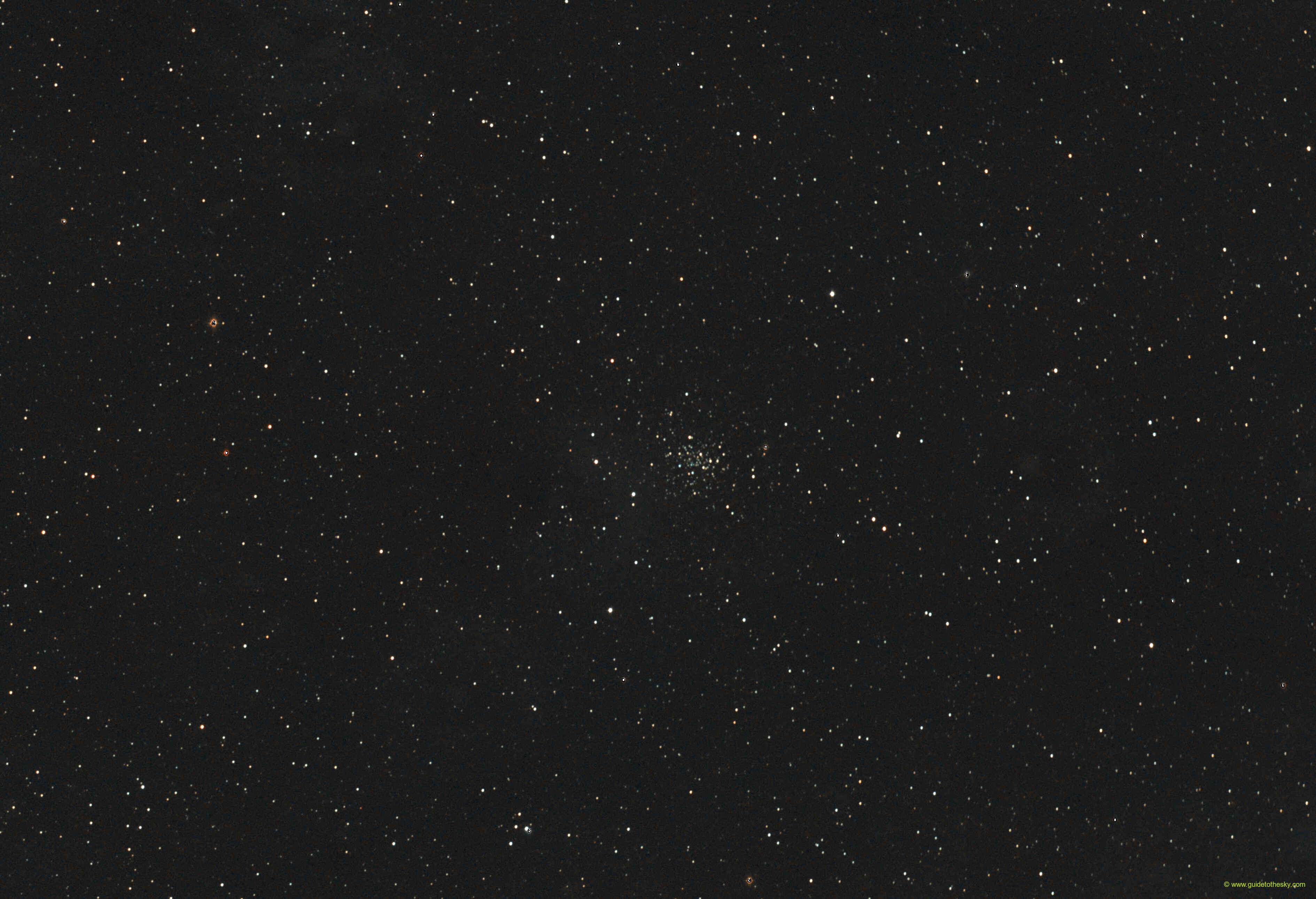NGC 2420 - Gemini

Con sólo una magitud conjunta de {{ object[0].NGC2420.visualMagnitude}} y un pequeño tamaño {{ object[0].NGC2420.angularN}}x{{ object[0].NGC2420.angularM}}, no nos hacemos una idea de su elevada concentración de estrellas, pues sus coponentes no pasan de la 11ª magnitud. Casi parece un cúmulo globular pues su apariencia es similar a M71, que sí es un cúmulo globular en la constelación de Sagitta o La Flecha.
NGC 2420 es una lejana formación de estrellas, dista de nosotros {{ object[0].NGC2420.mesDistances[0].dist }} {{ object[0].NGC2420.mesDistances[0].unit }}.
NGC2420 - Cúmulo del Cometa centelleante - en la IA
NGC 2420 is a fascinating open cluster located in the constellation Gemini. Here's a breakdown of what makes it interesting:
Key Facts:
- Type: Open Cluster
- Constellation: Gemini
- Distance: Approximately 8,300 light-years (2,550 parsecs)
- Age: Estimated at around 1.7 billion years old. This makes it a relatively old open cluster.
- Diameter: About 30 light-years across.
- Apparent Magnitude: 8.3 (fairly faint, requires binoculars or a telescope to observe well).
- Designations: Also known as OCl 495.
Interesting Features and Significance:
-
Old Age: Unlike many open clusters that disperse over time, NGC 2420 is relatively old and has remained gravitationally bound. Its age makes it a valuable subject for studying the evolution of stars in open clusters.
-
Low Metallicity: NGC 2420 is known to have a lower abundance of heavier elements (metals) compared to the Sun and other similar open clusters. This provides clues about the conditions in the region of the galaxy where it formed. Its metallicity is approximately half of the sun.
-
Location in the Milky Way: Its position in the outer regions of the Milky Way's disk, away from the more densely populated spiral arms, may have influenced its lower metallicity and longer lifespan.
-
Observational Challenges: Due to its faintness, NGC 2420 is best observed with binoculars or a telescope under dark skies, away from light pollution.
-
Star Composition: The cluster has a high number of white dwarf stars.
How to Observe It:
- Equipment: Binoculars or a small telescope are recommended.
- Location: Find a dark sky site away from city lights.
- Timing: Best observed during the winter months when Gemini is high in the sky.
- Finding: Locate Gemini in the night sky, and then use star charts or astronomy software to pinpoint the location of NGC 2420.
In summary, NGC 2420 is an old, metal-poor open cluster in Gemini that offers valuable insights into stellar evolution and the formation conditions of open clusters in the Milky Way.
Más información sobre NGC 2420 en NASA/IPAC.
Mapa alrededor de NGC 2420
Otros identificadores de NGC2420:
"C 0735+216" ,"NGC 2420" ,"Raab 56" ,"Cl Collinder 154" ,"Cl Melotte 69" ,"[KPS2012] MWSC 1292",

